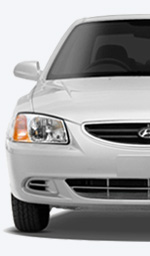 printable version printable version
Precautions for the use of seat belts
Seat belts should always be worn driver and passengers of all adults and children are big enough, which can be properly fasten your seat belts.
Compliance with elementary precautions can minimize the risk of serious injury in the event of a traffic accident. Infants and young children
In some countries, be sure to use child seats for transportation of infants and young children in the car. Regardless of whether it is the rules or not, it is strongly recommended to use a child seat or restraint devices for infants and young children weighing less than 18 kg. Older children
Children who have small children seats should sit in the back seat and fasten the lap-shoulder combination belt. Explain-shoulder strap should tighten and position it so that it is below the abdomen, and was located below the top of the hip bone. Periodically check the tension of the belt. If the child is older (over 13 years) is on the front passenger seat, it must be securely fastened safety belt. Under no circumstances should the child standing on the seat or on your lap.
In the case of a traffic accident the most safe for children to be in a child seat installed in the back seat. Pregnant women
Pregnant women are advised to use the available safety belts in the car to reduce the risk of injury, both the woman and her unborn child in the case of a traffic accident. The lap belt should be positioned across the hips as possible below the abdomen, and tightened as tight as possible, but in any case, not across the waist. Injured people
When transporting injured people need to use safety belts. A seat belt should be fastened one person
Do not use a seat belt two passengers (including children). This increases the risk of injury in the event of a traffic accident. Do not take a lying position
In order to reduce the risk of injury, as well as to ensure maximum effectiveness of the security system, all passengers must be seated and the front seats should be in an upright position as much as possible while driving. The seat belt will not provide the necessary protection if the passenger is in the back seat or front seat backrests tilted heavily.
A warning  Seat with backrest tilted or being in a supine position while driving can be very dangerous. When the backrest is tilted, even if you are wearing, the belt will not be able to fulfill its mission. The shoulder belt will not be effective because not be able to hold your body. Instead, it will be located in front of you. In the case of a traffic accident, he crashes into you, which can lead to serious injury of the neck, or other consequences. The lap belt will not be effective. In the case of a traffic accident, he can cut you in the belly, not the hip bone. This can lead to serious internal injury. Seat with backrest tilted or being in a supine position while driving can be very dangerous. When the backrest is tilted, even if you are wearing, the belt will not be able to fulfill its mission. The shoulder belt will not be effective because not be able to hold your body. Instead, it will be located in front of you. In the case of a traffic accident, he crashes into you, which can lead to serious injury of the neck, or other consequences. The lap belt will not be effective. In the case of a traffic accident, he can cut you in the belly, not the hip bone. This can lead to serious internal injury.
 Seat belt provides maximum protection when the seat back is in the upright position. Seat belt provides maximum protection when the seat back is in the upright position.
| 






